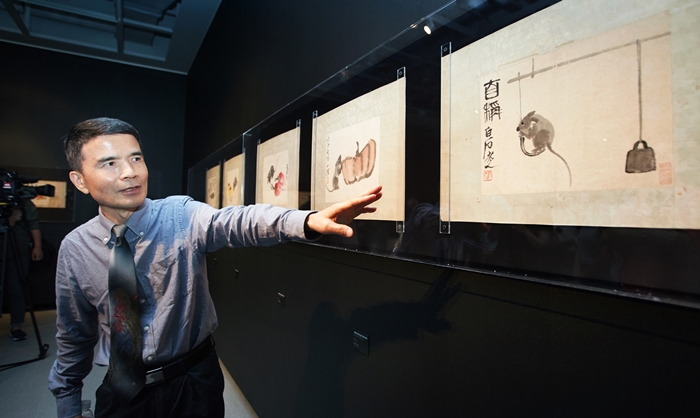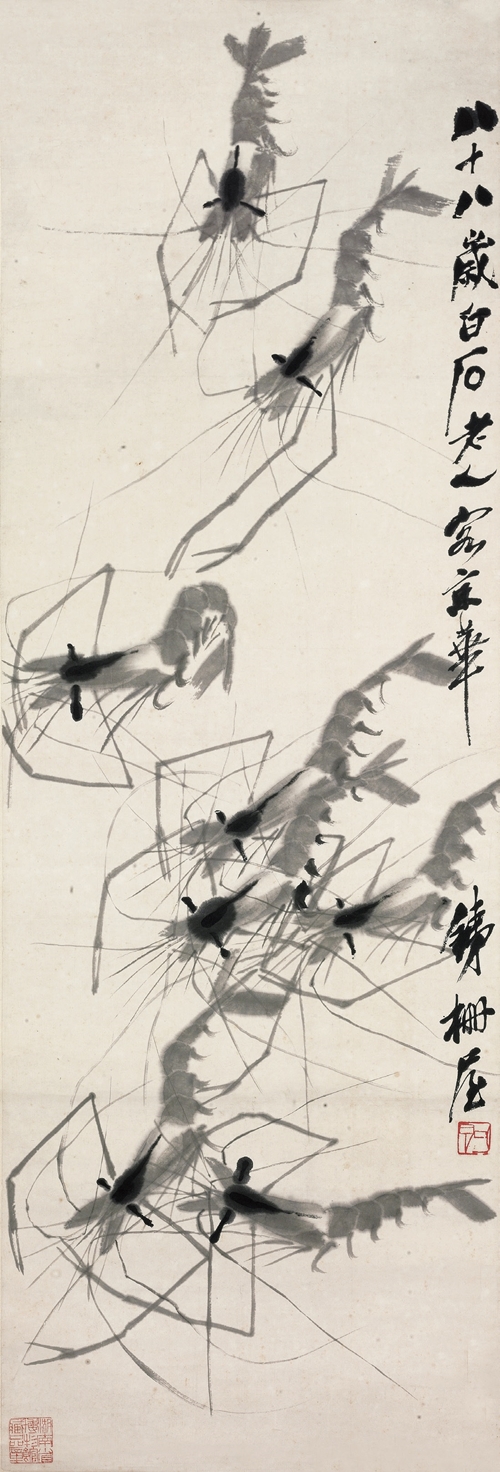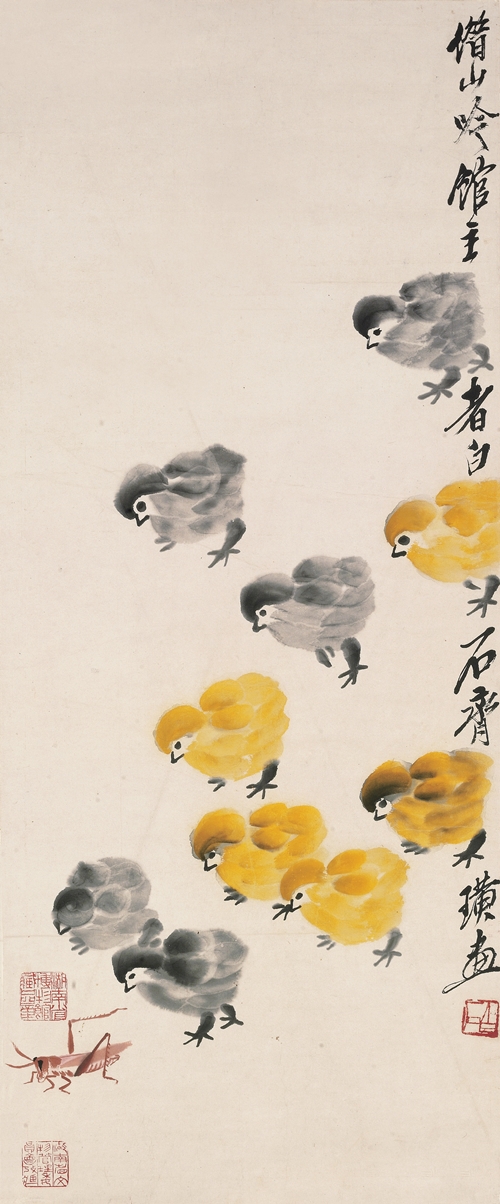
Liu Gang, head of the arts department at the Hunan Provincial Museum, provides insight into some of Qi Baishi's major works, at the 'Qi Baishi: From Carpenter to Master' exhibit at the Seoul Arts Center on July 31.
By Kang Gahui and Lee Hana
Photos = Seoul Arts Center
An exhibit that spotlights Qi Baishi (齊白石) (1864-1957), a 20th century painting master often referred to as "China's Picasso," has opened in Seoul in celebration of 25 years of diplomatic relations between Seoul and Beijing.
The exhibit "Qi Baishi: From Carpenter to Master" kicked off at the Seoul Arts Center on July 31, showcasing a total of 136 works, including paintings, calligraphy and engravings from the Hunan Provincial Museum, Qi's native province. Three paintings belonging to Korean collectors, as well as a collection of Qi's personal items, are also on display.
Part one of the exhibit features the evolution of Qi's work through the ages. Part two has on display some 43 homage pieces by Chinese and Korean modern artists who were inspired by Qi's masterpieces. These pieces allow audiences to see just how much influence Qi has had on paintings and calligraphic works produced across East Asia.
Qi, who is best known for his paintings of shrimp, started off as a poor carpenter in a small Hunan town. Despite humble beginnings, he eventually went on to become a leading artist of the 20th century, with a portfolio encompassing works of poetry, literature, painting and sculpture. He is famous for depicting leaves, bugs, fish, mice and frogs -- subjects usually associated with Chinese peasant paintings -- in a style that is distinctly his own.
At the exhibit, visitors will get to see some of Qi's most celebrated works, including "Shrimps," in which groups of these crustaceans swim across the length of the canvas. In "Chicks and a Grasshopper," 10 fluffy chicks chase a grasshopper. "Ox" is a landscape painting occupied by a sole leisurely, fat ox. Qi's whimsical and playful style of painting, coupled with his ability to depict his subjects using just a few strokes, define the artist's body of work. His vibrant reds and yellows, used for emphasis, also catch the viewer's attention.
Commenting on the popularity of the artist, Liu Gang, head of the Hunan Provincial Museum's art department, said, "With a stroke of his brush, Qi Baishi was able to transform ordinary objects into art forms. Qi's paintings make you feel a sense of familiarity, while also serving as a source of artistic inspiration."
The exhibit, organized by the Korean and Chinese governments, runs until Oct. 8. The entrance fee is KRW 5,000 for adults and KRW 3,000 for students or children.

'Shrimp' (1948), one of Qi Baishi's most defining works, is on display at the 'Qi Baishi: From Carpenter to Master' exhibit at the Seoul Arts Center.

'Chicks and a Grasshopper' shows 10 baby chickens chasing a grasshopper across the length of the scroll. The work is on display at the 'Qi Baishi: From Carpenter to Master' exhibit at the Seoul Arts Center.
kgh89@korea.kr